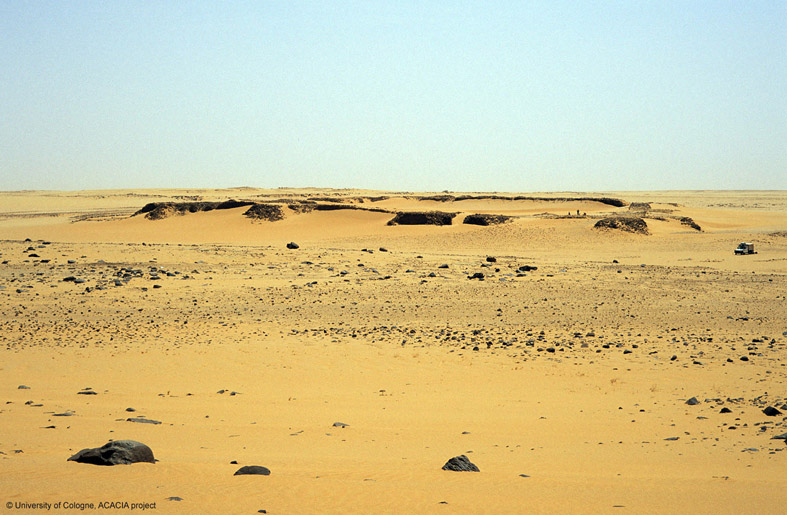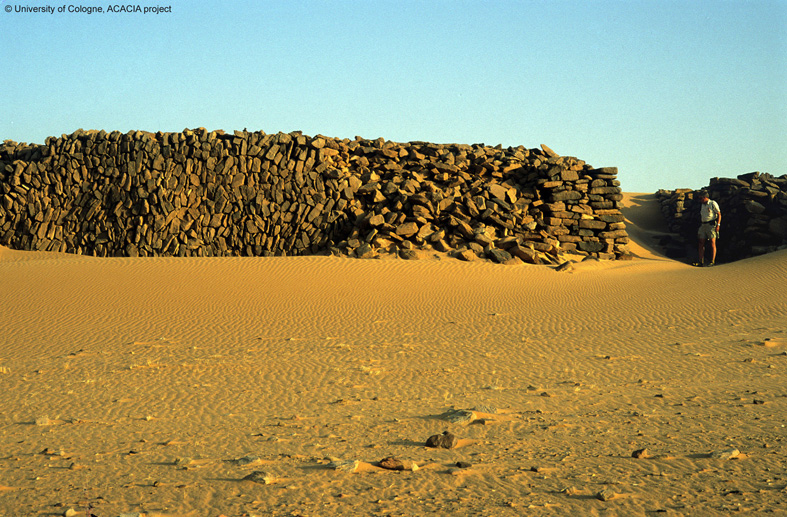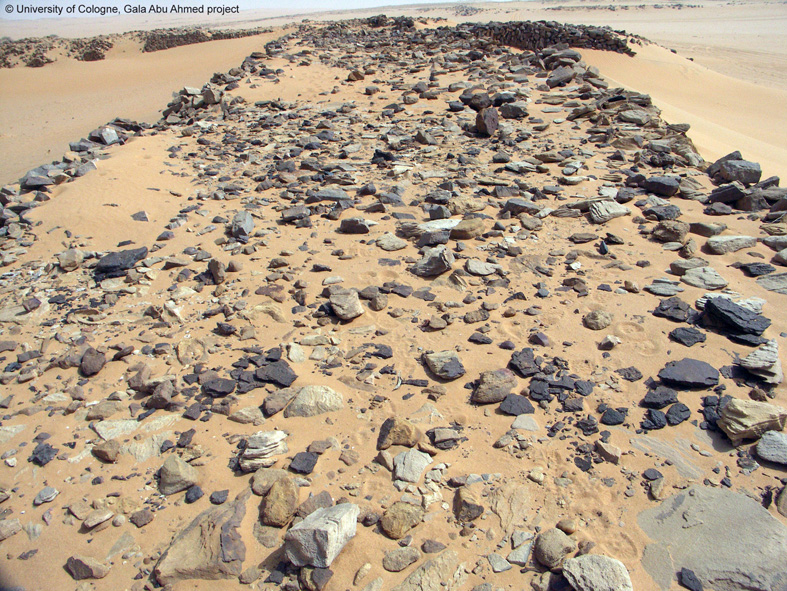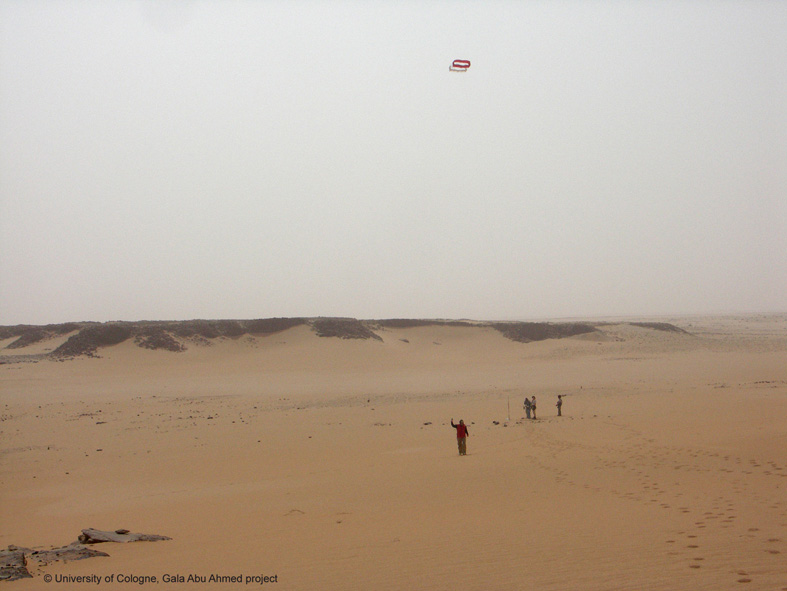The project
In August 2008 a research project funded for four years by the DFG started working at the fortress Gala Abu Ahmed in Wadi Howar, Northern Sudan (1). The impressive building with its rectangular bastions (2-4) covers about 120 x 180 m and is located in the middle of the desert, about 110 km west of the Nile. It was discovered by a team of the Cologne DFG-research project “Besiedlungsgeschichte der Ostsahara” (B.O.S.) in 1984. At that time no detailed investigations were possible. In 2002 and 2006 first archaeological work was then done there under the aegis of the Cologne research project SFB 389 ACACIA (5-6). This brought interesting results: Faience fragments (including New Year's flasks) from a small trench in the interior of the fortress could be assigned to Napatan period of the Kushite empire (9th to 4th century BC) and indicate contacts with Egypt. C14 data from charcoal and ostrich eggshell beads from the period 700 to 400 BC confirmed this assignment. The surprising presence of Egyptian influence in Gala Abu Ahmed sheds new light on the extent and organization of the Kushite sphere of influence during the 1st millennium BC. The function of the structure, however, remained unclear: Is it a purely military complex or did the building served also other purposes? Response to these questions should be given by the investigations in the context of the project. Research in Gala Abu Ahmed can also make an important contribution to issues of political, economic and military organization of the Napatan empire, its expansion to the west and to the architecture of the Kushite period.





